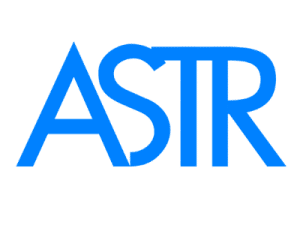The Difference Between Myofascial Pain Syndrome and Fibromyalgia
The Difference Between Myofascial Pain Syndrome and Fibromyalgia
Search terms: fibromyalgia vs myofascial pain, chronic pain diagnosis confusion
🤔 Confused by Your Chronic Pain Diagnosis?
You’re not alone. Many people are told they have fibromyalgia, myofascial pain syndrome (MPS), or both—yet continue to live with persistent pain, fatigue, and frustration. Although they share some symptoms, fibromyalgia and MPS are two distinct conditions with different causes and treatment approaches.
📋 What Is Myofascial Pain Syndrome?
Myofascialt smärtsyndrom is a chronic condition caused by tight, sensitive areas of fascia and muscle, known as triggerpunkter. These areas often form after:
-
Injury or overuse
-
Dålig hållning
-
Repetitive strain
-
Muscle tension from stress or inflammation
MPS is localized and mechanical in nature, meaning the pain comes from physical restriction in soft tissue—especially the fascia.
📋 What Is Fibromyalgia?
Fibromyalgi is a widespread neurological pain disorder involving the central nervous system. It’s characterized by:
-
Chronic widespread pain
-
Trötthet
-
Sleep disturbances
-
Cognitive dysfunction (“fibro fog”)
-
Tender points across the body
-
Often co-occurs with IBS, migraines, and anxiety
Unlike MPS, fibromyalgia does not involve distinct trigger points or tissue damage. It’s believed to stem from abnormal pain processing in the brain and spinal cord.
🔍 Key Differences at a Glance
| Feature | Myofascialt smärtsyndrom | Fibromyalgi |
|---|---|---|
| Pain Location | Localized | Widespread |
| Pain Cause | Trigger points & fascia | Nervous system dysfunction |
| Tissue Involvement | Fascia, muscles | Central nervous system |
| Sleep & Fatigue | Less common | Very common |
| Diagnosis Tools | Palpation of trigger points | Clinical symptoms, exclusion tests |
| Treatment Approach | Manual therapy & fascia tools | Nervous system regulation, lifestyle |
🎯 Why It Matters: Misdiagnosis Leads to Mistreatment
MPS is often misdiagnosed as fibromyalgia, especially if the doctor doesn’t check for trigger points or assess the fascia. This can lead to:
-
Overreliance on medication
-
Invasive treatments that don’t work
-
Missing the root cause: fascial restriction
If your pain is specific, reproducible, and worsens with movement, it may be MPS—even if you’ve been labeled with fibromyalgia.
🛠️ How ASTR Tools Help Relieve Myofascial Pain Naturally
Dr. Joseph Jacobs, DPT, developed Advanced Soft Tissue Release (ASTR) after battling his own chronic pain. His tool-based method targets fascial adhesions, trigger points, and scar tissue—the core problems behind MPS.
🔗 Treat Myofascial Pain Naturally With ASTR Tools
ASTR is ideal for:
-
Breaking up fascial restrictions
-
Reducing localized inflammation
-
Calming trigger point activity
-
Improving range of motion and blood flow
📘 Learn More in Pain No More
In Pain No More, Dr. Jacobs shares his recovery from chronic pain and explains the real role of fascia in conditions like MPS—and why most treatments fail without addressing it.
🔬 What the Science Says
-
Dommerholt et al. (2006): MPS is a distinct chronic pain condition involving palpable trigger points.
-
Ge et al. (2011): Myofascial trigger points can create referred pain and sensory disturbances.
-
Clauw (2015): Fibromyalgia is characterized by abnormal central pain processing, not tissue damage.
✅ Final Thoughts
Understanding the difference between fibromyalgia and myofascial pain syndrome is critical for lasting relief. If your pain is localized, achy, or worse with movement, it’s time to explore fascial-based therapy like ASTR.

